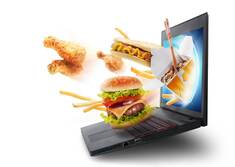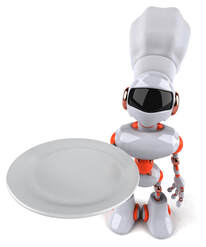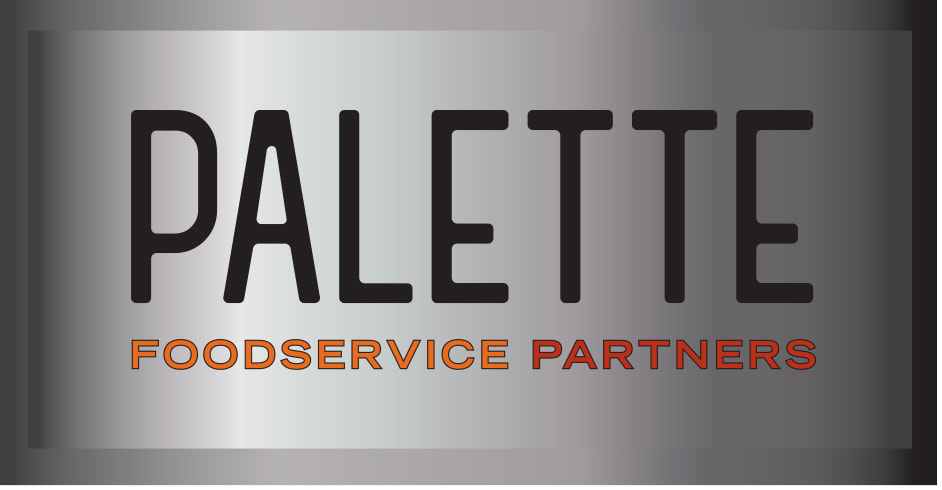 Foodservice sustainability was a key theme to the recent National Restaurant Association Show – and the tools and systems on display promoted benefits well beyond the environment. According to a Nation’s Restaurant News report, highlights of the show supported restaurants’ efforts around waste management, operational efficiency and food safety. Think eco-friendly fryers that reduce frying time, use less oil and may reduce oil vapors; AI-supported tech that helps operators track their food consumption and waste in real time; and sensors connected to the Internet of Things that can inform staff with greater precision when food that has been sitting out needs to be discarded, or if it’s still safe to serve.  The speed with which artificial intelligence has become an everyday tool in our lives can leave people both excited about its potential and wary of its risks. The same is true about the use of AI in restaurant operations. If your staff is stuck somewhere between wanting to embrace it and resisting it, help them separate fact from fiction. AI can support your restaurant by helping your managers create more efficient schedules, predict sales and facilitate communication among staff. What AI can’t do is replace human roles – it’s more about streamlining tedious tasks within a restaurant, reducing errors and freeing up time for staff to serve guests. More broadly, its integration with a restaurant’s existing POS can help operators more readily connect the dots between their data sources and make key decisions that will help optimize the business. There is no doubt that AI will play a key role in the development of the industry, so it’s important to embrace its applications – but it still requires people to monitor it as they use it to make decisions.  What goes for your food safety management program also applies to your technology: When your team understands why you’re enforcing a process or using a particular tool, they are more invested in using it and making it work for them. Your staff may have good reasons to resist the technology you introduce – perhaps they think it’s too complicated to learn, or maybe they feel it’s there to put them out of a job. But in truth, restaurants that use technology to truly support their staff gain the most from their tech and team alike – by offloading repetitive tasks, making existing tasks easier/faster/more efficient, or allowing staff to focus on more customer-facing responsibilities. Make sure your staff sees how the new scheduling software will allow them to swap shifts quickly or get paid faster. Show them how the inventory management system helps them avoid having to return to a guest’s table and apologize that an item isn’t in stock. Or how the kitchen display system helps them impress an allergic guest by getting an order precisely right each time.  As restaurants adopt more technology – out of necessity if not for a desire for greater efficiency – restaurant service is coming to mean something different. Earlier this year, Datassential predicted that human service would become more of a premium offering, with a more obvious human touch expected at higher-end restaurants. But the line between technology and human-delivered service is likely to be hazier for everyone else. As you consider new front-of-house tech, retain the human touch by asking if it can elevate the service you offer – through faster and easier payments, and menu items and targeted promotions supported by individual customer data as opposed to broad assumptions.  Recently, Wing Zone announced a new type of franchise partnership with Wavemaker Labs, the technology incubator that launched Miso Robotics (maker of the famous burger-prepping Flippy robot). Wavemaker Labs will eventually open 20 Wing Zone Labs locations around Los Angeles that will be a cross between franchised stores and technology incubators. Their motivation is to develop a new process for automating the range of tech tools and systems used by Wing Zone – with fewer piecemeal tools and more start-to-finish systems that offer a connected, streamlined experience. It's a sign of what’s to come for the industry. As David Bloom, Wing Zone’s chief development and operating officer, told Nation’s Restaurant News, the partnership is not simply about introducing more robotics: It’s about using artificial intelligence to take an order, then having that order sent directly into the POS system, which gets sent to robots to cook, then gets sent to heated locker systems for pickup or delivery. It’s about improving the process, start to finish. When you adopt new technology, consider how it will mesh with your existing systems to iron out bottlenecks and improve your process of taking orders, preparing food and getting complete orders to guests  The end of the year is a time restaurant operators can count on for strong performance – with December typically the most profitable month of the year. But Black Box data from December points to sales growth of just 4.1 percent, compared to 8.4 percent in November. It marked the weakest month for the industry since the 2.7 percent growth reported in March 2021. In light of those results, a recent Restaurant Business report suggested guests may be questioning restaurants’ value amid steeply climbing costs. It’s no wonder – amid ingredient and labor shortages, along with escalating costs, something has to give. But all the same, operators can only turn those figures around if they can demonstrate the value of choosing a restaurant meal over one prepared at home. Staffing shortages can cause service to take a hit, but you may be able to help compensate for this with improved speed of preparation: Simplify your menu with speed-scratch ingredients or other elements ready to be added to a number of dishes. Remove friction from the process guests must go through when searching for you online and placing an order. That means monitoring your restaurant online to ensure information about your menu, hours and contact information is up to date on review sites, search engines and social media, as well as testing your online ordering functionality to remove glitches and ensure repeat guests are recognized in your system. Speaking of loyal guests, double down on your loyalty program and guest personalization, which will make it feel more worthwhile for guests to support your business (either in your dining room or through order collection), as opposed to having a third-party vendor drop off their delivery order. Finally, aim to appeal to guests’ own values by supporting local suppliers and sharing their business names with guests – an expensive meal feels more worthwhile to a guest when they know it supports their broader community.  If you can automate food preparation as much as possible, you will reduce waste and grow your margins. While small operators might believe having a kitchen robot is an impossible expense, the pandemic may be changing that. The growth of virtual restaurants – and the creative approaches to challenges that operators have found during the pandemic – have increased the number of offsite options that can bring automation within reach for smaller operators. If you have food preparation tasks that could benefit from automation, consider other businesses in your area that likely have the same needs. At a time when so much food preparation is being done away from a restaurant’s public-facing location, you may be able to share the expense of a robotic machine based in an offsite kitchen that can churn out precisely chopped ingredients on a larger scale for multiple businesses.  Restaurant technology is one industry that has thrived during the pandemic – but we have yet to see how that will fully manifest itself. Restaurant Business reports that more than $5 billion has entered the industry so far this year alone– and that the investment has been feeding many mergers of complementary businesses that will likely develop new all-in-one solutions for restaurant operators. If you currently operate a broad array of tools and systems that don’t communicate with each other as well as they could, you can expect to see new options on the horizon that simplify tech for restaurants (and enough of them to make pricing competitive).  Many restaurants have added new guest-facing technology in the past 18 months – or at least considered adding it. According to the National Restaurant Association’s State of the Restaurant Industry report for this year, 40 percent of operators said they added tech solutions to their businesses. At the same time, there have been a dizzying number of options coming to market and operators have had more-limited resources to devote to additions. To ensure any new tech resource passes the litmus test for practicality, aim for it to simplify and smooth out the key pain points of the guest experience, yet fade into the background. How easy is it for a guest to use tech to view your menu? Can a guest quickly alert someone on your staff if they have a question? Can they place their order and pay without any delay? Can they split the tab with a friend who wants to pay another way? Consider any potential snag a guest may experience in the duration of their time with you – and how your tech can minimize it, shorten it or eliminate it. You have heard about the need to eliminate paper-based systems in your business – and it’s not just about making sure your next inspection goes smoothly. It’s a major time saver across your operation, which comes in handy at a time when you need everyone on a shift to be working at full capacity. Francine Shaw of Savvy Food Safety advises operators to use digital quality management systems for a range of reasons: They allow for the fast and accurate updating of compliance information and instructions (and distribution to employees across all locations when time is critical). They make records easier to search and analyze, providing faster access during a food safety incident and enabling operators to quickly identify trends across locations. Finally, they ensure you’re up to date on safety checks – and that they’re being done correctly so you can step in with training on the spot when problems occur.
|
Subscribe to our newsletterArchives
July 2024
Categories
All
|




 RSS Feed
RSS Feed